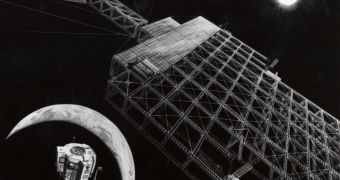The old idea of building an ample array of satellites and send them in the orbit of the Earth to collect and transmit energy via microwaves has been added estimative numbers. Although highly feasible in the long run, the project that would change economy, life and environment altogether is still a distant dream for any interested pocket.
Ben Bova, one of the most prodigious SF writers, the president emeritus of the National Space Society, recently came up with the solar satellite network idea in order to improve our fainting energy industry and lower electricity costs noticeably. Nothing new under the Sun, you may say, if you think Japan and India have had similar ideas. Basically, the flock of solar-powered satellites (SPS) would be sent in space, on an orbit with constant access to sunlight, where they would capture the Sun's energy (using an infinitesimal part of it for self-sustaining purposes), convert it into microwaves and send it to the Earth. Down there, it would be reconverted to energy, distributed and used as such. This activity would ensure a constant energy source, unlike the other energy producers, alternative or fossil. One SPS alone could provide an amount of about 10 to 100 gigawatts of electric power.
Bova suggested that the new American president should approve the funding necessary for NASA to build a single testable prototype. But since only the building costs would go sky-high (about $1 billion), not to mention a successful launch and the adjacent devices for converting energy to microwaves and the other way around, as well as those related to raising microwave capturing facilities on Earth, that seems away for the moment (a decade, to be more precise). Still, if it is started, besides the obvious benefits for the average people, the process could also lead to new space launch technologies and lower costs.

 14 DAY TRIAL //
14 DAY TRIAL //